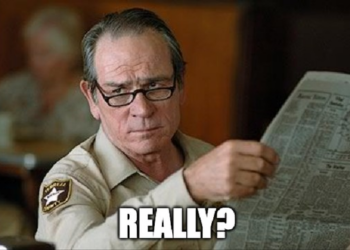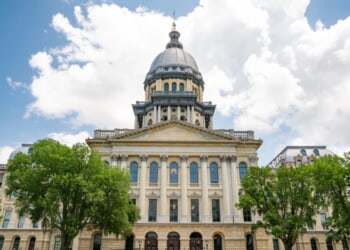As a high school student in New York, I used to think school was a place for learning, discovery, and growth. Lately, though, it feels like something has changed. Instead of focusing on academics, schools are putting more and more attention on politics — especially through DEI initiatives. While DEI programs claim to make schools more fair and welcoming, in reality, they often do the opposite.
In some schools, especially in urban districts, there is a growing push toward Afrocentric curricula that frame American history almost entirely through the lens of oppression.
One of the biggest problems with DEI is how it divides students. DEI programs group people based on race, gender, or sometimes even religion. The idea is to give extra support to students from groups that have been treated unfairly in the past. But when schools focus so much on what makes us different, it can create resentment and tension. Instead of bringing students together, DEI pushes us apart.
Students like me, who don’t fit into the groups that DEI highlights, often feel left out. A student shouldn’t be disqualified from a summer internship opportunity or scholarship program just because I they are not deemed a member of a group deemed in need of special treatment. Yet under Governor Hochul, these kinds of programs are expanding across New York.
New York Democrats in the State Assembly and Senate have even pushed for DEI programs to be funded directly by the state budget. In New York’s 2025 “People’s Budget,” Democrats included an initiative to fund efforts to “increase teacher diversity.” The Caucus is demanding an $8 million investment in recruitment, training, and retention programs to make the teaching workforce more “representative” of the student population.
But the initiative is especially ironic. New York City’s public school system — the largest in both the nation and state — already has a teaching staff that is approximately 42 percent black, even though African Americans make up just 22 percent of the city’s population.
In that same 2025 budget, Democrats rallied to allocate $250,000 toward promoting “racial and cultural inclusivity” across K–12 classrooms, supporting diversity and representation in education. They also found $3 million to fund an exhibit on the African American experience in the Adirondacks. Meanwhile, even as 8 in 10 New York City public schools report student poverty rates of at least 60 percent, New York’s Black, Puerto Rican, Hispanic & Asian Legislative Caucus “champions” allocating $351,500 for statewide and regional conventions for “underrepresented” educators, supposedly to address barriers faced by educators of color.
At a time when almost half the state’s students can’t meet basic reading benchmarks, it’s baffling that millions are being funneled into diversity programs, museum exhibits, and professional conventions rather than academic recovery. The numbers tell the real story: political posturing is coming at the direct expense of educational achievement.
Hochul Defies Trump on DEI
These policies are also putting our education system at risk. The Trump administration has told states that if they want to keep receiving federal education funding, they need to abandon race-conscious DEI programs. But Governor Hochul has refused; she is choosing to preserve her agenda, even if it means losing up to $2 billion in federal support. That money could pay for new textbooks, better school buildings, more teachers, and enrichment programs that help all students succeed. Instead, Hochul is risking critical resources for the sake of political symbolism.
Some students support DEI because they believe it helps make schools more fair. That’s an important goal. But fairness doesn’t mean treating students differently based on their racial or ethnic identity. Fairness means giving every student the same chance to succeed. DEI often replaces fairness with equity. Equity sounds nice, but in practice, it means treating students differently depending on their identity. Schools are no longer setting one high bar for everyone — they are lowering or adjusting the bar based on race or other categories.
DEI is changing what students are taught. In some schools, especially in urban districts, there is a growing push toward Afrocentric curricula that frame American history almost entirely through the lens of oppression, while traditional topics such as the Constitution and classical literature are minimized.
Rather than creating a shared academic foundation, New York schools are dividing students by identity group and offering radically different educational experiences depending on where you live and who you are.
The truth is, education should be about preparing students for the future — not pushing a political agenda. Students need strong reading, writing, math, and science skills. They need to learn how to think critically, solve problems, and understand the world around them. When schools focus more on political ideology than academics, everyone loses. And when leaders like Governor Hochul ignore the real problems in schools, things only get worse.
New York’s public education system is deteriorating by nearly every measurable standard. In 2023, only 46 percent of New York State students in grades 3–8 scored proficient in math, and just 49 percent reached proficiency in English Language Arts (ELA). That means more than half of students across the state are not meeting grade-level expectations.
In New York City, which serves over one million students, results are even worse, with low-income and minority students most affected. Despite the fact that New York spends more than $29,000 per student annually — the highest amount in the country — academic performance continues to decline. Clearly, spending more money without focusing on academics is not the solution.
At the same time, many of New York’s schools are weighed down by layers of bureaucracy that slow down real progress. The worst-performing school systems in New York — such as New York City, Buffalo, and Rochester — are the large, consolidated districts where decision-making is highly centralized and disconnected from parents and local communities. More consolidation would only make these problems worse. Local control is not the issue; it’s Albany’s ever-increasing mandates, like DEI requirements, that are tying the hands of local districts and teachers.
Families see little improvement in classroom conditions, even as school budgets balloon year after year. Chronic absenteeism has surged since the pandemic, with around 40 percent of NYC students missing more than 10 percent of the school year in 2023. Buildings are falling apart, teachers are exhausted, and students are increasingly disengaged.
New York students deserve better. We deserve real academic excellence, safe and welcoming schools, and an education that prepares us for life beyond the classroom. If Governor Hochul truly cares about students, she should listen to all of us — not just to the loudest political activists. Hochul should fight for better schools and policies that bring students together around common goals — not divide them by race or identity.
READ MORE from Gregory Lyakhov:


![Reality Hits Adam Schiff in San Francisco—It’s Not Pretty for Democrats [WATCH]](https://www.right2024.com/wp-content/uploads/2025/04/Reality-Hits-Adam-Schiff-in-San-Francisco—Its-Not-Pretty-for-350x250.jpg)


![Trump’s White House Trolls Illegal Alien Gangs With Hilariously Brutal Video [WATCH]](https://www.right2024.com/wp-content/uploads/2025/03/1742261427_Trumps-White-House-Trolls-Illegal-Alien-Gangs-With-Hilariously-Brutal-350x250.jpg)

![James Comer Hints at the Epic Behind-the-Scenes Effort Targeting the Deep State [WATCH]](https://www.right2024.com/wp-content/uploads/2025/04/James-Comer-Hints-at-the-Epic-Behind-the-Scenes-Effort-Targeting-the-350x250.jpg)



![Dem Strategist James Carville Goes on His Most Delusional Rant to Date [WATCH]](https://www.right2024.com/wp-content/uploads/2025/03/Dem-Strategist-James-Carville-Goes-on-His-Most-Delusional-Rant-350x250.jpg)





